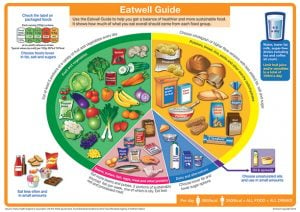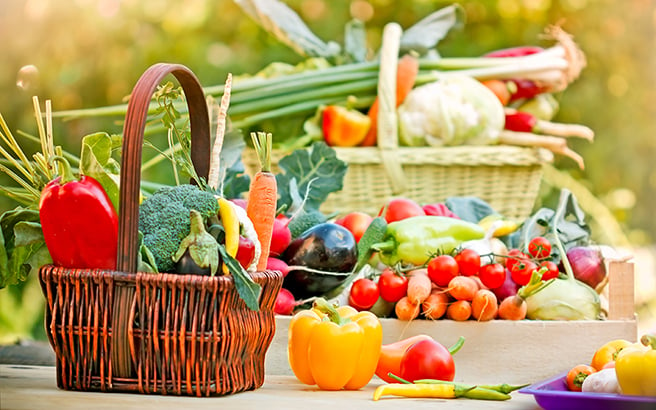Eating a healthy diet can help prevent overweight or obesity, which is linked to at least 13 types of cancer.
Download the Eatwell Guide.

Although there are similarities between the new Eatwell Guide and the previous eatwell plate, there are some key differences:1
1. Renamed to ‘Eatwell Guide’
PHE found that people thought the term ‘plate’ was confusing, suggesting that every meal should reflect the plate rather than the overall balance of their diet. ‘Guide’ was considered to be a more helpful term.
2. Resized food group segments
The resizing took into account the current intakes of the most commonly consumed foods, applied revised Government dietary recommendations, and modelled the fewest possible changes needed to achieve the recommendations. This ensured that any adaptations were realistic and not too far removed from the current dietary habits of the population.
3. High fat, salt and sugar foods have been removed from the main image
This highlights the fact that these foods are not needed as part of a healthy diet.
4. Inclusion of a hydration message
The Guide reinforces fluid recommendations and suggests the best drinks to choose; water, low-fat milk and sugar-free drinks including tea and coffee.
5. Inclusion of energy requirements and front of pack nutrition labels
Energy requirements were added to reinforce the message that all foods and drinks contribute to total energy intake. Food labelling information was added in a response to feedback regarding the lack of guidance on choosing healthier foods when shopping.
6. Fruit juice has been removed from the fruit and vegetable segment
Although 150ml of pure fruit juice a day still counts towards one of our 5 A DAY, the advice around drinks has been encompassed within the hydration message.
What can you do?
How can you support people to eat a more balanced diet? Our updated Eat Well booklet could be a helpful resource when talking to people about their diet.
References
- Public Health England. The Eatwell Guide [online]. 2016. Available at: www.gov.uk/government/publications/the-eatwell-guide
This is an article from Informed, our newsletter for health professionals. For more information or to sign up, click here.

